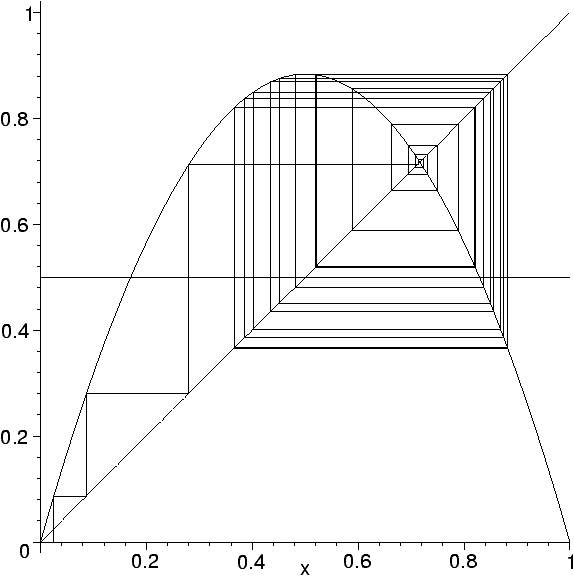

| F |
|
(x)=4µ x(1-x), µÎ[ 0,1) |
To each xÎ I is associated the infinite word a(x)Î{0,1}* whose kth letter is 0 if Fµk(x)£1/2 and 1 otherwise. The aim of Cristopher Moore and Porus Lakdawala [6] is to study the language L formed by the set of prefixes of all a(x) for xÎ I (the symbolic dynamics of Fµ) and its evolution as µ increases from 0 to 1. For instance, the language corresponding to µ in Figure 2 is
| L=0 |
|
1 |
|
(10) |
|
(1011) |
|
. |
| L=0 |
|
1 |
|
(10) |
|
(1011) |
|
(10111010) |
|
. |
Figure 3: Limit cycle for µ=0.887.
Figure 4: Limit cycle for µ=0.89.
| L0(z)= |
|
, Ln(z)=Ln-1(z) |
|
. |
|
||||||||||||||||||||||||||||||||||||||
|


This document was translated from LATEX by HEVEA.